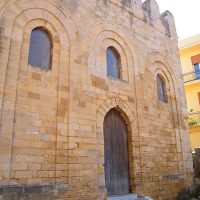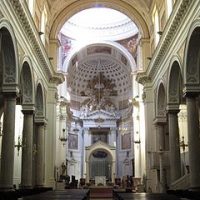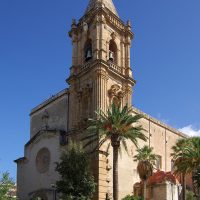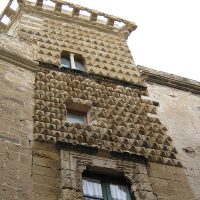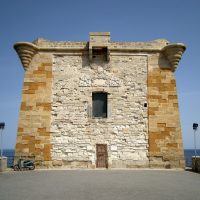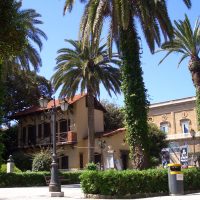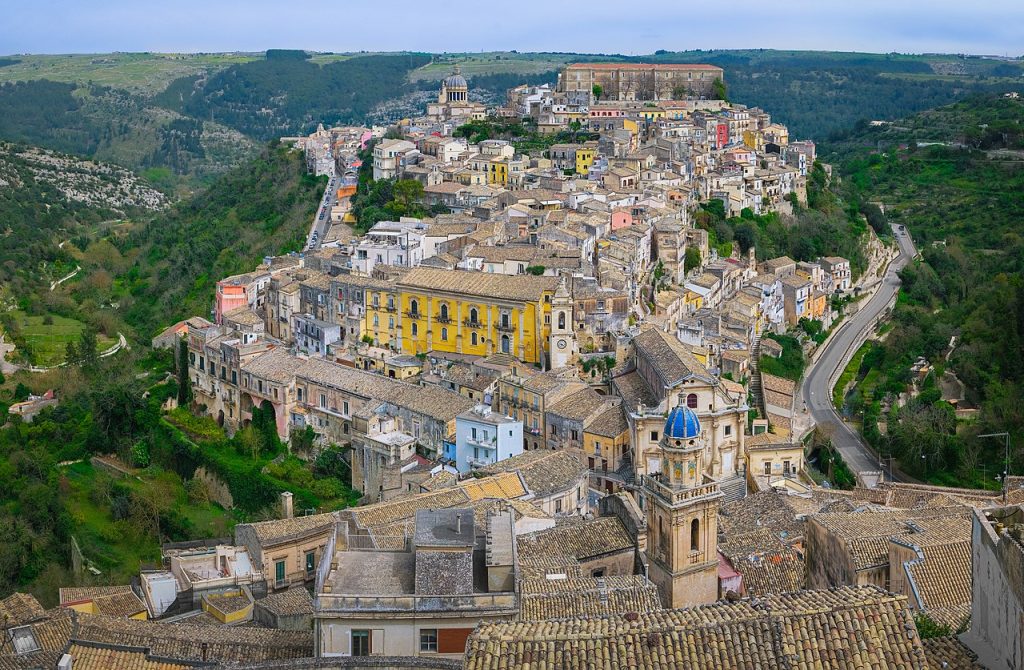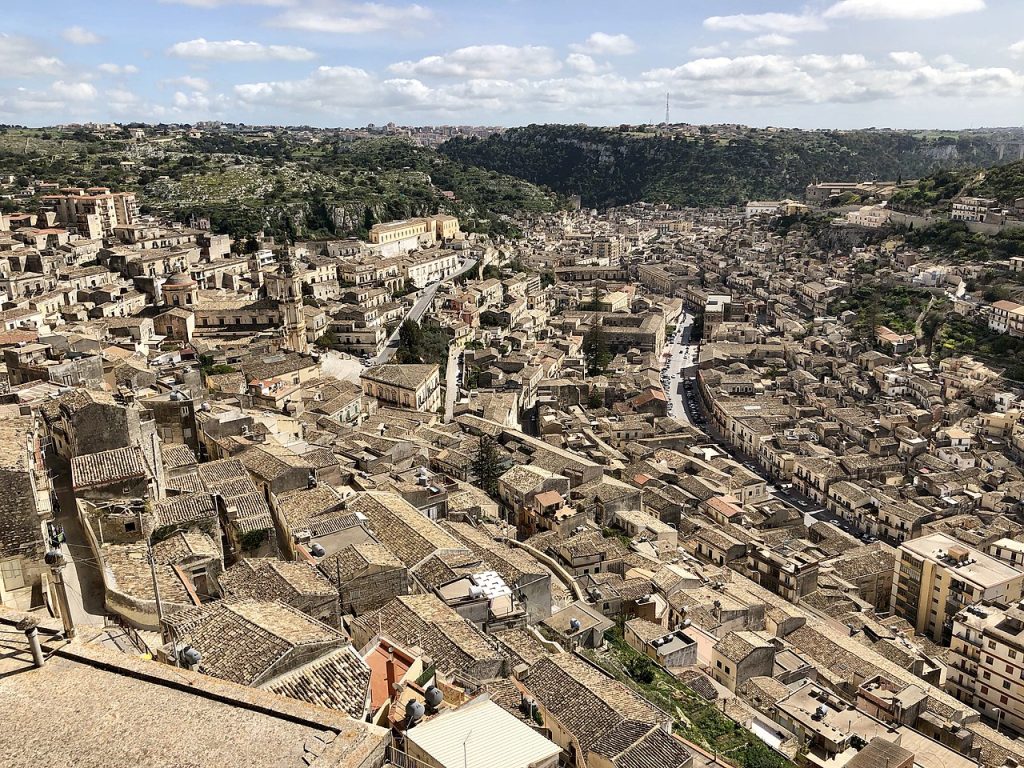Trapani is an Italian town of 68 370 inhabitants chief town of the homonymous free municipal consortium in Sicily.
Trapani has developed over time a flourishing economic activity linked to the extraction and sale of salt, taking advantage of its natural position, projected on the Mediterranean, and its port, an old commercial outlet for Eryx (today’s Erice), located on the mountain that above Trapani. The economy today is based on the tertiary sector, on fishing (formerly that of bluefin tuna, with the slaughter), on the extraction and export of marble, on activities linked to trade and tourism.
The area also includes the populous village of Casa Santa, belonging to the municipality of Erice. Therefore, the entire urban urban fabric collects around 100,000 inhabitants.
Together with other municipalities, it is part of the Erice Doc Wine Roads, the City of Wine Association, the Covenant of Mayors movement, the “Western Sicily” Territorial Tourist District and the Trapani North Territorial Pact.
Trapani is located in the western part of Sicily, on the promontory of the ancient Drepanum in Latin, from the Greek Drèpanon, (Δρέπανον, sickle), given the shape of the peninsula on which the city stands. It is also called “city between two seas” as it juts out over a narrow strip of land, surrounded by the sea, which tapers towards the extreme tip of Torre di Ligny. The municipal territory is vast 271 square kilometers, the largest in the province, with a density of about 260 inhabitants per square kilometer. The city has an average altitude of three meters above sea level.
Its municipal territory is crossed by the Chinisia river. The Isola della Colombaia, the Scoglio Palumbo, the Isola degli Asinelli and the Porcelli rocks are also part of the territory of Trapani.
The origins
Mythology wants that a sickle fallen from the hands of Ceres or of Saturn, the latter the traditional patron god of the city, changed into a tongue of arched land on which the city rose, for this form called Drepanon (“scythe” in ancient Greek).
In the Aeneid, Virgil tells that the father of Aeneas, Anchise died in Drepanum and, after escaping from Didone, the Trojan hero returned there to celebrate the games, the novendiali ludi.
The founders of the first settlement of Trapani were probably the Elimi, a people settled in western Sicily in protohistoric times and of which Eryx (Erice) was one of the main centers. The small village of Trapani had to rise on an island divided from the marshy hinterland by a navigable canal and played the role of commercial port of Erice. Trapani soon became a city-emporium thanks to its fortunate geographical position.
Religious architectures
- Jesuit College Church – a complex comprising the college and the monastery, designed by the Mexican architect Natale Masuccio, is an example of Sicilian baroque. The Jesuit college from the XIX century it is home to the Ximenes High School.
- Basilica-Sanctuary of Maria Santissima Annunziata, known as “Madonna di Trapani”.
- Sant’Agostino Church – Built in the XIV century, it is distinguished by its rose window and stands out on the small and delightful square of Saturn, adorned by a XIV century fountain.
- Santa Maria del Gesù Church- Notable example of Romanesque architecture, it houses a beautiful glazed terracotta, the “Madonna degli Angeli”, by Andrea della Robbia.
- Purgatory Church – It houses the twenty sacred groups of the Mysteries.
- San Lorenzo Cathedral – The church stands out for its original XVIII century Baroque façade consisting of arches. Inside it is possible to admire a painting depicting a Crucifixion attributed to Van Dyck. He has the dignity of a minor basilica.
- Maria SS. dell’Itria Church – Another noteworthy example of Sicilian baroque, this church is commonly called Santa Rita because the saint of Cascia and the relics of the venerable Fra Santo of San Domenico are venerated there.
- San Pietro Church – This church, which gives its name to the oldest district of the city, stands on a site where the pre-Christian cults in honor of Saturn were probably officiated. The pride of the church is its splendid organ, built by Francesco La Grassa in 1842 and composed of four thousand reeds. He has the dignity of a minor basilica.
- Badia Nuova Church – In the elegant Via Garibaldi, it is a small but precious Baroque church.
- Sant’Alberto Church – In via Garibaldi, baroque and with a single circular aisle, it is now closed to worship and hosts exhibitions of contemporary art.
- Protobasilica of San Niccolò – Located in Via Barone Sieri Pepoli. He has the dignity of a minor basilica.
- San Domenico Church – houses a wooden crucifix from the 1300s that is intended to be miraculous.
Berthold Werner, CC BY-SA 3.0, via Wikimedia Commons
Civil architectures
- Casina delle Palme, a small Art Nouveau building with adjoining garden, in the port area, 1922.
- Lazzaretto of Trapani, built in the XIX century.
- Burgio Palace of Baroni of Xirinda, a XVI century residence in Via Garibaldi; seat of the Banco di Sicilia since 1908 after a modular restoration work by the Palermo architect Francesco Paolo Palazzotto who created the neo-gothic façade.
- Nicolò Burgio Palace, via Sette dolori. It has three precious lancet windows with mullioned windows and a two-light window on the first floor, and traces of a portal in the Chiaramonte style. These are the vestiges of the Trapani dwelling of the Chiaramonte family.
- Cavarretta Palace, with its sumptuous Baroque façade, is the ancient Palazzo Senatorio, today the seat of the city council.
- Vultaggio Palace – Building (formerly Baron Domingo), XVII century, in via Barone Sieri Pepoli.
- D’Alì Palace, built in 1904, seat of the Town Hall, in Piazza Vittorio Veneto.
- Annibale Fardella Palace, XVIII century, via Garibaldi, headquarters of the BBCC Superintendency.
- Fardella Baroni Palace in Mokarta, in Piazza Matteotti, behind the Cathedral.
- Alessandro Ferro Palace, in Corso Vittorio Emanuele, XVIII century, characterized by the clock in the center of the façade, and by balconies in which gables are placed medallions depicting busts of illustrious figures of the Ferro family.
- Berardo Ferro Palace, in Corso Vittorio Emanuele, built in the late XVIII century in late Baroque style.
- XVI century Giudecca Palace, in Plateresque style, in the ancient Jewish quarter of Giudecca (Jurèca).
- Ex Grand Hotel Palace, (then Concordia club) built in 1885 in Piazza Garibaldi.
- Papè Lombardo Palace, the seat of the Bishop’s Palace, consisting of two XVIII century palaces.
- Lucatelli Palace, from 1455 was the seat of the hospital of the Compagnia of S. Antonio which in 1628 inherited the assets of the patrician Lazzaro Lucatelli.
- Malato Palace, in neoclassical style, via Torrearsa.
- Manzo Palace, formerly Pucci, of late baroque style, was the home that gave birth to Minister Nunzio Nasi.
- Epifanio Marini Palace, neoclassical, Corso Vittorio Emanuele.
- Milo Baroni della Salina Palace (now Pappalardo), in via Garibaldi, built at the end of the XVII century.
- Milo Palace, via Argentieri.
- Nobili Palace, from the 1500s, from the Renaissance, Via San Francesco di Paola.
- Platamone Palace, in Viale Regina Margherita.
- Poste Palace, in Art Nouveau style, designed by the architect Francesco La Grassa and completed in 1927.
- Riccio di Morana Palace, an XVIII century noble palace in the neoclassical style, seat of the Presidency of the Province of Trapani in via Garibaldi.
- Riccio of S. Gioacchino Palace, between Via Turretta and Corso Vittorio Emanuele, is characterized by its richly decorated balconies.
- Sanseverino Palace of the Princes of Brisignano, in via Libertà, XVII century, in 1727 it was restored by the architect Giovanni Biagio Amico. The Vicerè of Sicily resided in the palace in his visits to Trapani.
- Saura Palace, XVIII century, via Garibaldi.
- Sieri Pepoli Palace, located between Via Carreca and Via Barone Sieri Pepoli. In 1535 the emperor Charles V stayed there for almost two weeks, returning from the Tunis countryside.
- Staiti Palace, Baroni della Chiusa, XVIII century, via Garibaldi.
- Todaro Palace, Baroni della Galia, XVII century, Via San Francesco di Paola.
- Vicaria Palace, Via San Francesco d’Assisi, built from scratch in 1830 by the Jesuits, was the seat of the prisons from 1655 until the XIX century, characterized by the four stuccoes tamed telamones of the façade.
- Botteghelle Door, was built in the XIII century, and opens onto the beach of the Walls of Tramontana.
- Ossuna Door or Serisso, no longer existing, was on the opposite side of Porta Botteghelle. The keystone, with its inscription, is kept in the Pepoli Museum.
- Oscura Door – clock tower, the oldest gate in the city, adjacent to Cavarretta Palace, probably already existed at the time of the Carthaginians. Over the centuries it has undergone several changes. The tower, from the XIII century, supports an astronomical clock built in 1596.
- Nasi Villa, is located in the area of the fishing port in front of which there is the small island on which the Colombaia Castle is located.
Military architectures
- Ligny Tower (Turrignì), built in 1671 by order of the Vicerè Don Claudio La Moraldo, prince of Ligny. Inside today there is the Museum of Prehistory.
- Colombaia Castle or Castello di Mare (‘a Culummàra)
- Terra Castle, a fortification dating back to the Carthaginian era, has for centuries been the defensive stronghold of the city. Partially ruined to build the new police headquarters. The remains are clearly visible from the Dante Alighieri promenade.
- Bastion of the Impossible, from the XVI century, located in the south-eastern corner of the ancient city walls, was so called because of the muddy terrain on which it seemed impossible to build it.
- Sant’Anna or Imperial Bastion, from the XVI century, visible from Viale delle Sirene.
- Bastion Conca, from the XVI century, reachable from the walk of the Walls of Tramontana.
Monuments and sculptures
- Monument to Giuseppe Garibaldi, made in 1890 by Leonardo Croce.
- Monument to Vittorio Emanuele II, made in 1882 by the Sienese Giovanni Duprè.
- Tritone Fountain, built in 1890, is located in Piazza Vittorio Emanuele. At the center of the fountain is the bronze monument made in 1951 by the master from Trapani, Domenico Li Muli.
- Saturno Fountain, built in 1342 by the Senate of Trapani to celebrate the inauguration of the aqueduct, is inserted in the homonymous square.
- Statue of the Madonna of Trapani
- Statue of Sant’Alberto degli Abati, a silver reliquary statue, work of the silversmith Vincenzo Bonaiuto, kept in the Basilica-Sanctuary of Maria Santissima Annunziata.
Squares
- Piazza Garibaldi, where there is a statue dedicated to the famous hero of the Italian Risorgimento.
- Piazza Vittorio Emanuele, which houses the monument to Vittorio Emanuele II and the Triton fountain.
- Piazza Mercato del Pesce, (‘a Chiazza) in the past used for the retail sale of fish; in the middle of the square there is a fountain representing the Venus Anadyomene.
- Piazza Vittorio Veneto, in front of the Palazzo della Prefettura, hosts the War Memorial.
- Piazza Generale Scio, in the heart of the old part of the city, is in front of the so-called Casa del Mutilato. It also acts as a terminus for the urban bus lines that pass within the historic center.
- Princess Jolanda of Savoia Square, built in 1873, with the statue of Gaspare D’Urso, placed in 1910.
- Piazza Lucatelli, in the historic center, overlooking the homonymous building (former city hospital), with a characteristic fountain.
- Piazza Martiri D’Ungheria, its recent redevelopment concerned both the architectural and urban aspects: it is in fact an important road junction where the Fardella, Count Agostino Pepoli, Orti and Corso Piersanti Mattarella streets meet. Once, as testified by the Sicilian name of the square (‘u Daziu), it was the gateway to the city, to which all goods in transit had to stop to pay duty.
Gardens
- Margherita Villa, extended over an entire 21,000 m² block, is the largest public garden in the city.
- Pepoli Villa in front of the Regional Museum of Agostino Pepoli.
- Municipal Villa of V.le Marche in the Sant’Alberto district (former Rione Palme)
Saltworks
They are still active with valuable evidence of industrial archeology. The salt pans insist in the area of the Saline integral reserve of Trapani and Paceco managed by the WWF and characterized by a remarkable flora and fauna. Thanks to the protection guaranteed by the Reserve, the activity of salt and salt production has increased, favoring at the same time the return and reproduction of dozens of species of migratory birds, including the pink flamingo.
Museums
- Regional Museum Agostino Pepoli – Housed in the former XIV century Carmelite monastery, adjacent to the Santuario dell’Annunziata, it is one of the most important Sicilian museums. It houses an impressive collection of decorative arts, sculptures (including works by Gagini), cribs and coral jewelry, and an art gallery that includes, among others, paintings by Tiziano and Giacomo Balla.
- Museum of Prehistory – It is housed in the XVII century Torre di Ligny, on the extreme western tip of the city, preserves important prehistoric testimonies of human presence in the territory, as well as artifacts (artifacts, amphorae, anchors, a Punic helmet) coming from the sea of Trapani.
- San Rocco Museum of Contemporary Art – Housed in the Palazzo San Rocco, in the historic center.
- DiArt, a diocesan collection of permanent religious art, housed in the premises of the bishop’s seminary in the district of Raganzìli (location Casa Santa) that administratively falls within the municipal territory of Erice.
- Diocesan Museum, Church of Sant’Agostino
